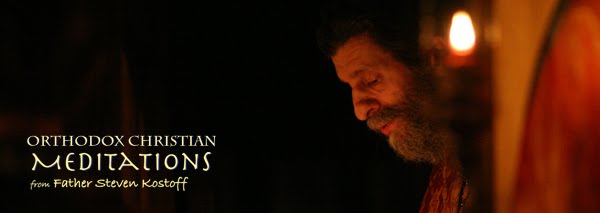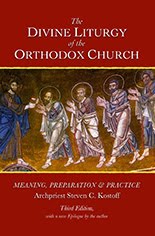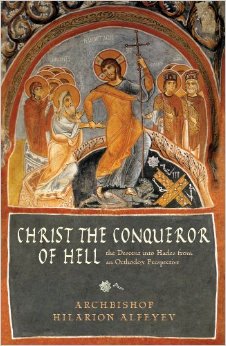Dear Parish Faithful,
CHRIST IS RISEN!
On Saturday evening, His Grace, Bishop Paul, spoke to us about Christian "martyria" as an essential response to the secularism of our contemporary world. Martyria or martyrdom means, of course, witness. The ultimate witness is to die for one's faith, and those are the martyrs that we so venerate to this day. However, as Bp. Paul pointed out, we are not persecuted in that manner in North America.
We may be ridiculed as Christians; and we have to accept laws that we do not find morally acceptable; but we are not persecuted as Christians of the Middle East are. Our witness is made with the "little crosses" that we are willing to take up to reveal Christ as the ultimate Source, Value and Goal of our lives. We witness by placing our life in the Church above other concerns - secular events, from sports to social gatherings, to entertainment, etc. - in our daily lives, even if that may not be so convenient.
Those were Bp. Paul's words of wisdom and it is difficult to disagree with him - especially for committed Orthodox Christians.
To apply his teaching to a concrete example, I would like to make the link between this type of more modest martyria and the upcoming parish Spring/Summer Bible Study that will begin this Wednesday evening.
Our choice of committing our time to the group study of the Holy Scriptures over and above any and all forms of secular events or entertainment is precisely the type of martyria that His Grace is commending. This is not a spectacular martyria, but it is meaningful nevertheless.
As stewards of time - and not only money - how will we "redeem the time" in St. Paul's phrase? If we do not have some sort of inescapable commitment on Wednesday evenings, how can we not gladly come together and study the Bible as brothers and sisters in Christ? What is "out there" that is so much more important, compelling or attractive?
Again, choosing the parish Bible Study is precisely that modest form of martyria that His Grace spoke about quite eloquently. His Grace also pointed out that it is in the parish where all of this begins. We need more opportunities than Sunday mornings Liturgy to build up our fellowship and togetherness as parishioners. This is all integral to our Christian martyria in a secular world.
I am not a biblical scholar, but I have been trained by excellent biblical scholars and theologians in the Orthodox interpretation of the Holy Scriptures - from my days at St. Vladimir's Seminary and beyond. And over the years, I have maintained a rigorous devotion to the continued study of the Bible to be a more effective teacher of biblical revelation to the flock entrusted to my pastoral care. Not to be immodest, but I believe that I am a decent enough teacher of the Holy Scriptures in the context of parish life. I am convinced that you will learn something. I am also convinced that once you come, you will be glad that you did so.
We will study at least a part of the Gospel According to St. John this summer. Especially the "signs" found in JN. 1-12. This is fascinating, powerful and life-transforming material. It is the Good News and nothing less. His Grace would admit that he only "scratched the surface" at Sunday's Liturgy with his penetrating homily on the Samaritan woman. We will keep "digging deeper" as we gather together and study St. John's extraordinary Gospel. And we will begin with the thrice-extraordinary Prologue (Jn. 1:1-18), the Gospel reading at the midnight Paschal Liturgy.
If you have the opportunity, I encourage you to choose the Bible Study as a form of Christian martyria over a secular concern that can be satisfied at some other time. You may not be here all through the summer, but faithfully fulfill your witness and come when you are able. Married couples with young children can perhaps "take turns" from week-to-week and thus an alternating husband and wife can represent the family. If you have the ministry of a teacher to our children, come to this as a course in "ongoing education." There is no one who does not fit in.
We will begin with Vespers at 7:00 p.m. followed by the Bible Study at 7:45 p.m.
















